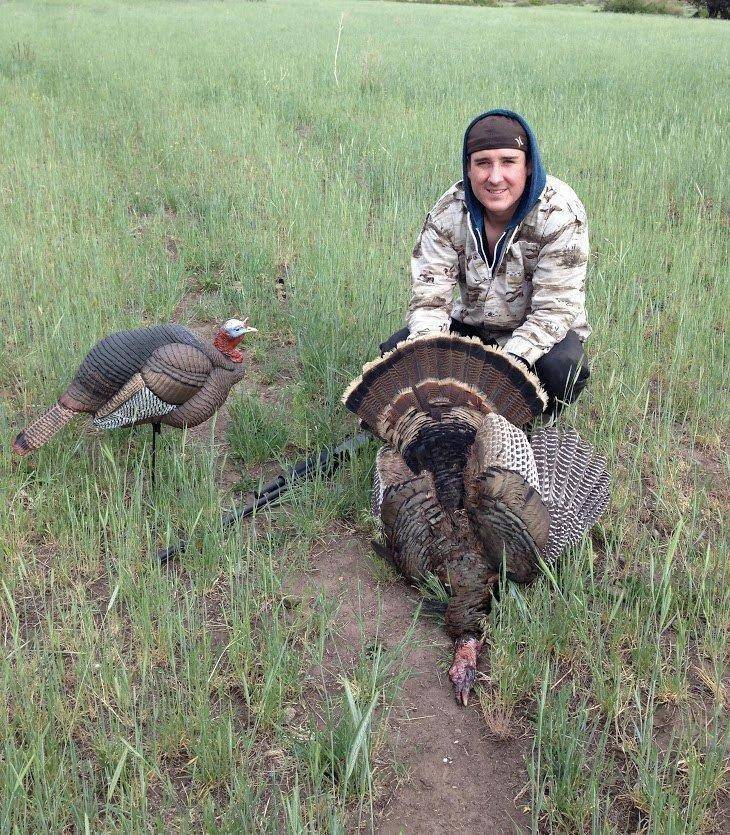DWR Press Release
Plenty of permits available
If you didn’t draw a permit to hunt wild turkeys in April, no problem: you can still get out and have a great turkey hunting experience in Utah this spring.
In fact, the general turkey hunt in May provides advantages you won’t find during the limited-entry hunt that’s underway now.
Utah’s general statewide turkey hunt starts April 28 for hunters who will be 17 years of age or younger on July 31. On May 1, the hunt opens for hunters of all ages.
Permits will be available until the hunt ends on May 31. And buying one is easy. You can get one at www.wildlife.utah.gov. Permits are also available from more than 300 hunting license agents across Utah and at Division of Wildlife Resources offices.
If you’ve never hunted turkeys before—or you have, but you want to brush up on your skills—check out the turkey hunting videos at www.wildlife.utah.gov/turkeys.
General hunt advantages
Jason Robinson, upland game coordinator for the Division of Wildlife Resources, says the general statewide hunt provides hunters with several advantages:
Advantage 1 – More days to hunt
The general hunt runs the entire month of May. The limited-entry hunt runs for three weeks in April. Also, in May, the weather is usually drier and more pleasant than the weather is in April. You’ll have more days to take a bird while enjoying springtime in Utah’s backcountry.
Advantage 2 – Better access
Because the weather is typically milder in May, you’ll usually find drier roads and less snow. That means you’ll have a wider area to hunt and better access to areas that hold birds.
Advantage 3 – Turkeys still gobble in May
To increase the chance you take a bird, it’s important to hunt when turkeys are gobbling. “When the birds are gobbling,” Robinson says, “male turkeys, called jakes and toms, are much more receptive to calling. The chance a turkey will respond to your call, and come in for a closer look, goes way up if the birds are already active and gobbling to each other.”
Unfortunately, when the weather gets cold and wet, the gobbling often stops. “The general hunt runs for four solid weeks,” Robinson says. “Compared to the limited-entry hunt, you’ll have 10 more days to be in the field at the right time—when the turkeys are gobbling.”
Robinson says two peak gobbling periods happen in the spring. The first usually happens in mid-April—during the limited-entry hunt—when tom turkeys call aggressively during the peak of the breeding season. Another peak happens during the general hunt in May. That’s when toms call aggressively as they seek hens that haven’t bred yet or that need to breed again because their nests failed.
Advantage 4 – You might feel less crowded
The final advantage is one that might be hard to believe: even though more hunters are in the field with you, you might feel less crowded.
“After the spring hunts,” Robinson says, “we survey hunters to see how their hunts went. Hunters consistently tell us they feel less crowded during the general hunt.”
Robinson thinks the perception has a lot to do with mindset. “Because fewer permits are offered for the limited-entry hunt,” he says, “if you draw one, you kind of expect to have the area to yourself. If another hunter hunts the same area, you might feel crowded.
“During the general hunt, hunters expect to see other hunters in the field, and they don’t seem to mind as much. They actually feel less crowded.”
Participate in “Gobbler Getter” Slam
You can add some extra challenge and excitement to your hunt by participating in Utah’s Upland Game Slam. If you register in the program, and then take a turkey, you’ll receive a collectable coin with the words Gobbler Getter on it.
You can learn more about the Gobbler Getter Slam, and register to join the program, at www.wildlife.utah.gov/uplandslam.
All of the money raised through the Gobbler Getter Slam is used to benefit turkeys and turkey habitat in Utah.
Turkeys are doing well in Utah
Despite a tough winter in parts of Utah, Robinson says the state’s turkey populations are doing great.
“This past winter was fairly hard in northern Utah,” he says, “but turkeys are hardy birds. They can survive tough conditions. And populations can also bounce back quickly even if birds are lost.”
Turkeys are doing so well in northern and southern Utah that biologists have been able to take birds from those areas and move them to parts of Utah where there’s room for more turkeys.
“If you put turkeys in the right habitat,” Robinson says, “they’ll flourish.”
More information
More information about hunting wild turkeys in Utah is available in the 2016 – 2017 Utah Upland Game & Turkey Guidebook. The free guidebook is available at www.wildlife.utah.gov/guidebooks.
If you have questions about hunting turkeys in Utah, call the nearest Division of Wildlife Resources office or the DWR’s Salt Lake City office at 801-538-4700.

